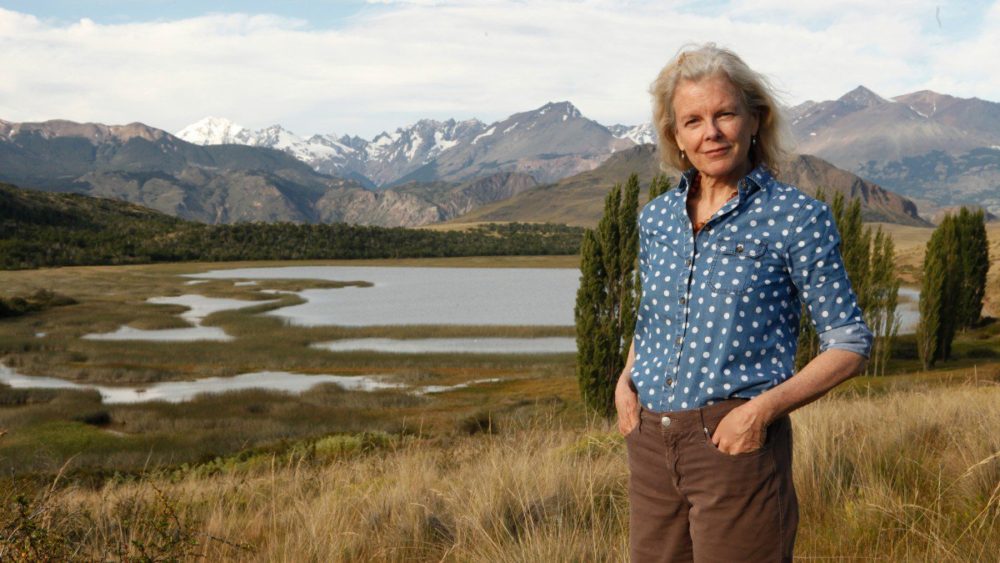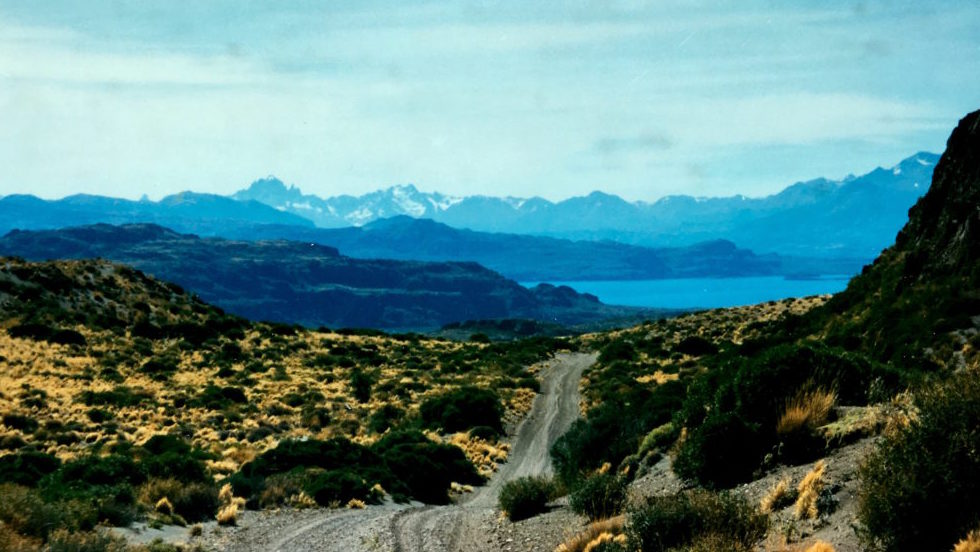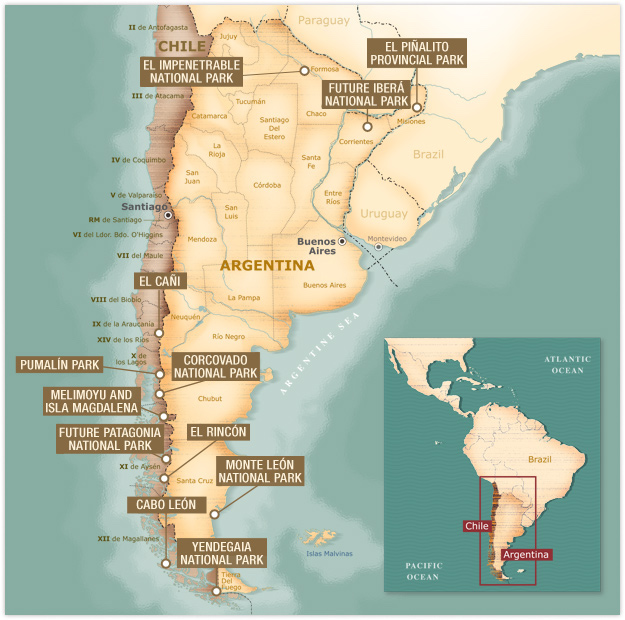
“In a rhythm of reciprocity, beauty enhances life and life reaches toward beauty.” – Sandra Lubarsky
Kris and Doug Tompkins’ love for the outdoors brought them to the corporate world but their business successes and continued passion for adventure brought them full circle back to nature. We, our children, and future generations are fortunate to have such exceptional philanthropists and activists who chose to step off the corporate ladder to focus on the preservation of the wilderness areas—the fields, mountains, and waters—that had drawn them into the business of manufacturing outdoor equipment and clothing.
Doug Tompkins’ and Yvon Chouinard’s life-changing adventure to the majestic lands of Patagonia in 1964 set the course for their future commitment to protecting wild places. After selling his share of North Face in 1969 and Esprit in 1989, Doug Tompkins shifted his focus to environmental education, advocacy, and conservation with the launch of The Foundation for Deep Ecology . In parallel, Yvon Chouinard started to design, build and manufacture climbing equipment, creating Chouinard Equipment and then the outdoor clothing company, Patagonia, with Kris McDivitt (to become Tompkins) as CEO. Through their work with the Patagonia brand, they become known as pioneers of the implementation of environmental ethics in business.
In 1992, Doug Tompkins formed The Conservation Land Trust, to create and expand parks globally. With “the last wild place” at heart, Doug began to invest in conservation groups in Patagonia, South America, offering grants to local environmental groups (including Foundation Lahuen for which I helped conduct a biodiversity inventory of Isla Magdalena back 1993, now soon to become a national park!). When Kristine joined her new husband Doug in Patagonia in 1993, threats of dam projects and oil and gas development were increasing, the couple started to purchase large parcels of land with the vision to create national parks to assure long-term, regional environmental protection.

“You get out of bed every morning and you do something. You act, you step into the fray, and you fight for a human society that is in balance with the natural world.” Kristine McDivitt Tompkins
While for many of us, the name “Patagonia” brings ” romantic visions of glaciers tumbling into fjords, jagged windswept peaks” to mind, the branding of the name and privatization of the landscapes were not always perceived favorably by the locals inhabitants and governments of Patagonia. What the Tompkins see as philanthropy has been seen by the local ranchers see as meddling, and the Tompkins became known as the couple “who cut Chile in half” and the eco-power couple. But over the years, they slowly earned the trust of locals and government officials, after donating land to the governments of Chile and Argentina, and help fight large hydro dam projects.
The Tompkins’ efforts to create parklands, conserve biodiversity, restore degraded lands, reintroduce species, encourage environmental activism, and promote ecologically sound agriculture practices have been praised globally. The diversity of their initiatives and the amount of land that they have helped preserve can be difficult to visualize. Over time, the array of organizations they have established and directed, including the Foundation for Deep Ecology, The Conservation Land Trust, Conservation Patagonica, Fundacion Pumalín, and Fundacion Yendegaia, in addition to private farms, have been brought under the umbrella of Tompkins Foundation.
Despite the unexpected loss of Doug Tompkins during a kayaking accident in Patagonia in 2015, the sense of Kris’s and Doug’s teamwork remains. With the ongoing help of her global team of innovative “rewilding” experts, Kris continues to live and work in Chile, still devoted to protecting and restoring the landscapes to which she and her husband dedicated their life and resources. On her website, Kris states: “I am personally committed to seeing our projects advance and even accelerate in the coming years, building on our quarter-century of hands-on, on-the-ground experience and success… All of us who love the Earth can see how the threats to wild places and creatures are growing. Conservationists know there is tremendous and urgent need and have incredible opportunities to expand national park systems, to work with local communities linking ecotourism-related economic development and nature protection, and to help build a culture of conservation throughout society. This is crucial work – it’s the work we’ve been doing for decades now and will be doing with all of our energy and resources long into the future.”
Tompkins Conservation’s projects include:
- The protection of more that 711,000 acres to create Pumalin Park in 1996, which was then designated Chilean Nature Sanctuary in 2005.
- The donation of 165,000 acres to the Argentine National Parks to create Leon National Park in 2000.
- The donation of roughly 210,000 acres to Chile government to Create Corcovado National Park in 2005.
- The transfer of 94,000 hectares to the Chilean government to create Yendegaia National Park in 2013.
- The formal inauguration of Patagonia Park in 2015 in preparation for the transfer to the Chilean Government in the near future!
For more information on all protected areas initiated by Tompkins Conservation click on each protected area below.
The Conservation Land Trust-Chile projects:
Pumalín Park—southern Lakes Region
Corcovado National Park—southern Lakes Region
Yendegaia National Park—Magallanes Region
Melimoyu and Isla Magdelena—Aysén Region
Cabo León—Magallanes Region
El Cañi Sanctuary—Araucania Region
The Conservation Land Trust-Argentina projects:
Future Iberá National Park—Corrientes Province
El Impenetrable National Park—Chaco Province
El Piñalito Provincial Park—Corrientes Province
El Rincón (Perito Moreno National Park)—Santa Cruz Province
Conservacion Patagonica projects:
Future Patagonia National Park—Aysén Region
Monte León National Park—Santa Cruz Province
Visit the Tompkins Conservation Milestones and the read the new Book Tompkins Conservation 25: A Quarter century to Save the Wild for more details on the astonishing work the Tompkins have accomplished.
Prepare your visit to Patagonia, Read the Brochure welcoming you to the New Patagonia Park!
[Photographs: main & survey: E. Vital; landscapes & map: tompkinsconservation.org; portrait:outsideonline.com]



